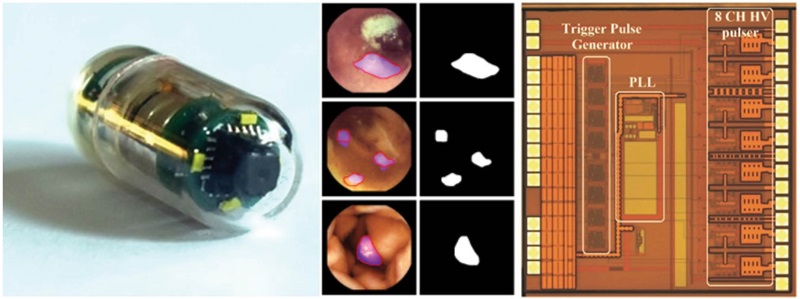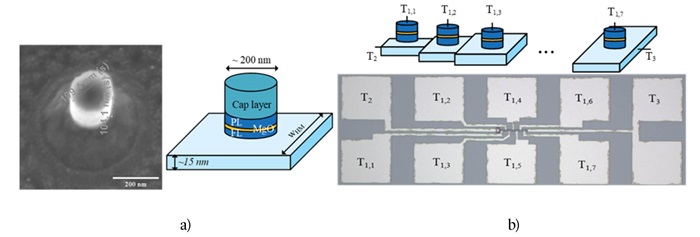Chip Design
The High Frequency and Digital Electronics section at Southern Denmark University (SDU) stands at the forefront of chip design innovation, particularly in the realm of medical applications. Our dedicated team is committed to transforming healthcare technology through the development of advanced microchips, addressing a wide array of medical needs.
Our expertise is broad and comprehensive, covering high-frequency components, digital systems, and the integration of intelligent functionalities into compact devices. Among our notable achievements is the pioneering development in Intelligent Wireless Capsule Endoscopy technology. This advancement has revolutionized diagnostic medicine, offering a non-invasive, comprehensive, and patient-friendly approach to gastrointestinal examination.
In addition to our work in medical diagnostics, our section boasts significant experience in the design and implementation of High-Frequency Transceivers. This expertise underscores our capability in enabling reliable data communication, a critical component in both medical devices and broader technological applications. Our proficiency in creating sophisticated communication modules contributes immensely to the efficiency and effectiveness of medical diagnostics and patient monitoring systems.
Fostering interdisciplinary collaboration, our section merges the skills of engineers, healthcare professionals, and data scientists to develop solutions that are technologically superior, patient-centric, and feasible for real-world application. We are dedicated to educating future leaders in the field, providing hands-on learning in cutting-edge design and manufacturing processes.

Neuromorphic Computing
Neuromorphic computing represents a bio-inspired approach to information processing that introduces a paradigm shift to address the limitations of von Neumann architecture. It proposes the utilization of components to mimic the functionalities of neurons and synapses. This form of computing holds the potential to significantly enhance the efficiency of essential computational processes, including decision-making and perception. In contrast to conventional artificial neural networks (ANNs) where neurons fire at every propagation cycle, the neurons in a spiking neural network (SNNs) only fire when a membrane potential reaches a predefined threshold. In the spike-time-dependent plasticity (STDP) rule, an unsupervised learning in SNN, the direction and the magnitude of the change in synaptic strength depend on the relative timing between presynaptic and postsynaptic spikes.
The most mature and extensively utilized approaches for developing synaptic plasticity models rely on either analog memory (capacitors) or static random-access memory (SRAM). The volatile nature of capacitors undermines the learning capacity of the network and for SRAM, it can store a binary value. Along with such conventional approaches, emerging beyond-CMOS technologies such as spintronic and resistive random-access memory (RRAM) devices offer viable alternatives for implementing both neurons and synapses for neuromorphic computing systems.
As an innovative implementation example, a magnetic tunnel junction (MTJ) can be utilized, offering advantages such as low power consumption, area efficiency, non-volatility, and compatibility with CMOS technology. We propose a multi-state spin-orbit torque (SOT) synapse where a heavy metal (HM) is shared among 7 MTJs with varying widths. By manipulating the cross-sectional area of the HM at different points, each MTJ possesses a distinct critical charge current. By using of this synapse design and the development of peripheral circuitry, the STDP learning algorithm can be implemented.

Fig.1. (a) SOT-based MTJ (b) multi-state SOT synapse